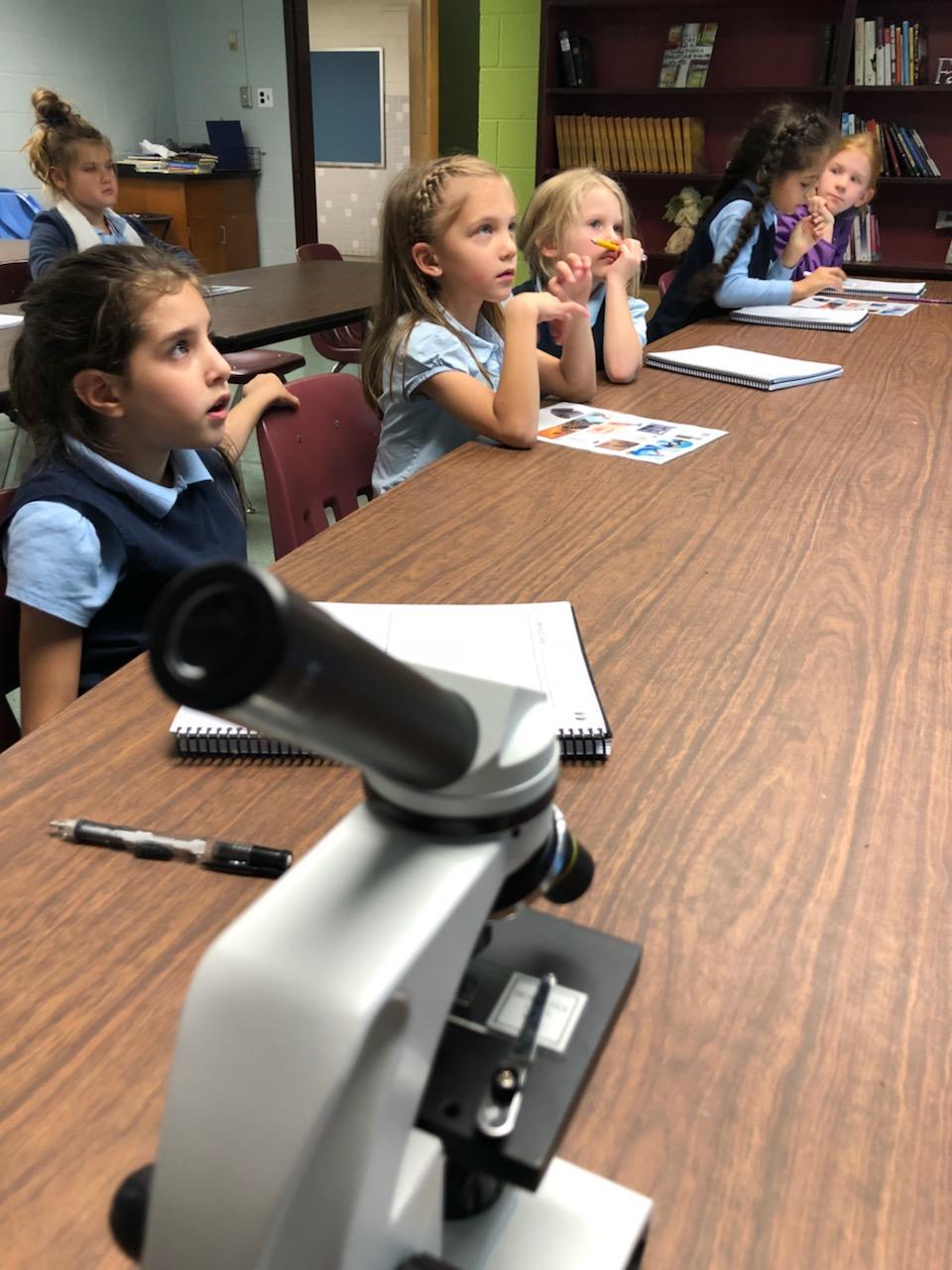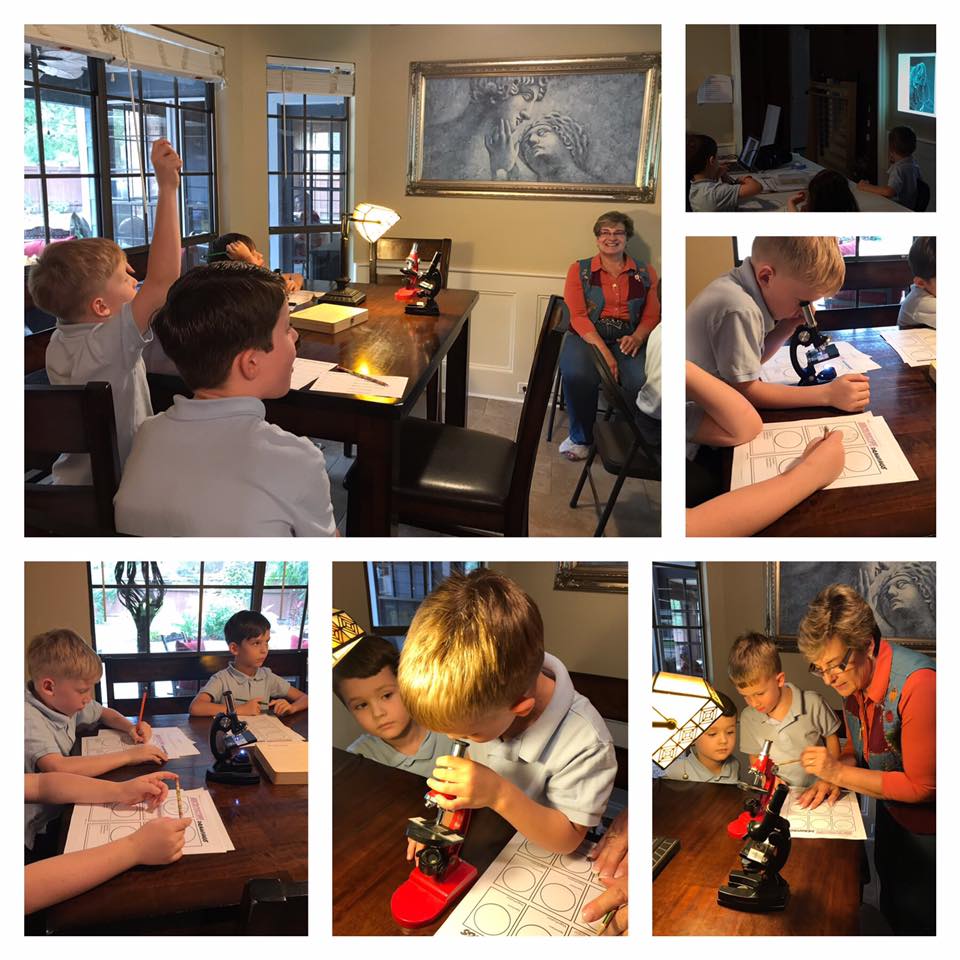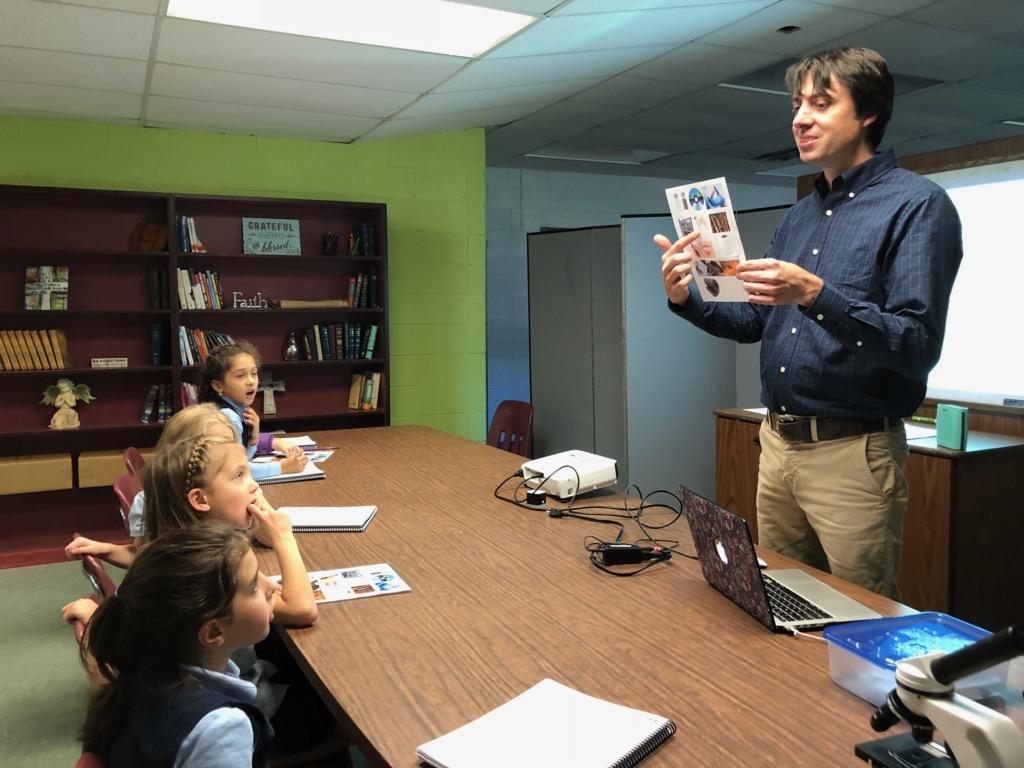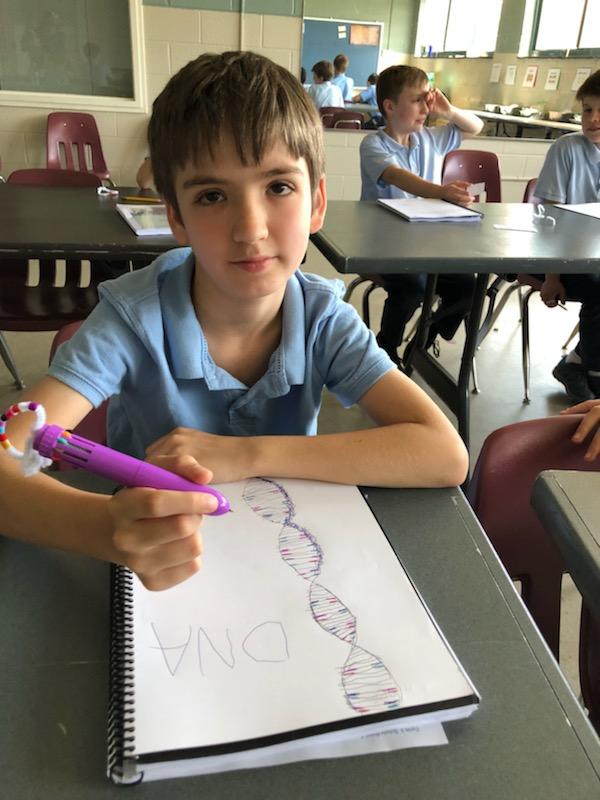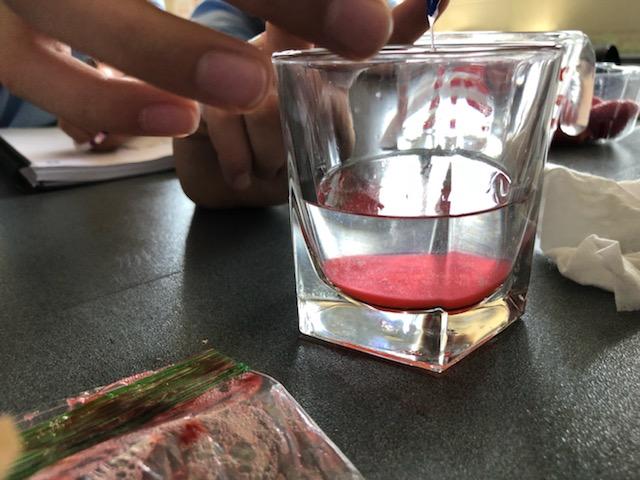Behind the Behold Class: Unleashing the Power of Wonder
Extracting DNA from a strawberry with Mrs. Tiffany Mathias.
“Behind” the Behold Class: Unleashing the Power of Wonder
THE WHY
Aquinas Learning (AL), as a classical education mentoring program, encourages students to behold and contemplate what is true, good and beautiful to cultivate wisdom and virtue. This prepares the student to learn how to truly behold things, especially when the priest says, “behold the Lamb of God, Who takes away the sins of the world.”
The Behold Class is a “hands on” chance for the student to quietly BEHOLD an object of curiosity or beauty (music, a science experiment, or a piece of art) that is closely integrated to the other concepts they’re learning in that cycle and be moved to WONDER about it (guided by the mentor). Our goal in this class is to apply philosophy using real world, concrete examples.
THE HOW
Although each AL Center tailors the Behold Class slightly to their needs, the class generally presents Art, Music and Science in rotating lessons throughout the year that encompass Cycle-appropriate material. For instance, many centers recently produced Egyptian-themed artwork as part of Cycle 1, Ancient History.
The goal of the Behold Class is NOT to provide instant answers or long explanations by a teacher. Aristotle tells us that we learn by first being engaged by our senses. We fill in gaps when we are allowed to compare and contrast “types” and previous knowledge with newly acquired knowledge. When we behold differences and similarities, it furthers our understanding of a thing. The mentor provides context in ensuing conversation, and asks further questions to make more connections. Our open-ended lessons invite the student to think on the topic more deeply. The key is to let them be “born in wonder” and continue to wonder even beyond dismissal.
Practical tips when teaching a Behold Class:
First, engage the senses by providing an experience (art demonstration, science experiment, music) without much discussion. For instance, they walk in to music already playing. In art, you can start the class with a slide of a painting projected on to a wall in order to simply behold it.
Guide the students to wonder about the “thing.” Mentors can make use of queries such as “I wonder why ________?” in search of both abstract and concrete answers. This is a process of searching for a concrete answer—but not providing it immediately or directly to the student. Repeat the experience a second time if necessary, this time discussing the process and encouraging students to take notes. (Once or twice, you can employ the Scientific Method as a practice and a way to define what the Scientific Method is. It is not the end we are trying to accomplish. It is a procedure to teach so they can apply it when they get to Schola Alta and beyond.)
Ask questions. What is causing the occurrence and what will happen if the process is done differently?
Art: Who/What is depicted? What type material was used? Why do you think the artist used this method? What do you think the artist is showing?
Science: What did you observe? Why did it happen?
Music: What do you hear? What instruments are involved? What do you think the musician’s goal was in creating this music? How are you moved?
Imitation. Have the students try it, imitate it, DRAW it.
Provide some context (and inspirational material to foster continued wonder). For Music, this might be information about the composer (simple biographical details, historical context, and some information about the musical expression of the piece). For Science, you could provide information about scientists that studied the phenomena you are discussing. For instance, if you were looking at Marie Curie and chemistry in Cycle 3, you might want to discuss the gumption or “stick-to-it” quality of so many famous inventors and scientists. Remind students that there are often almost insurmountable challenges to be faced, but with the help of God and the choice to keep on going, those obstacles can be overcome, and the world forever changed. The goal of this type of context is, again, not to provide answers, but to give enough of a framework to understand the material and continue the wonder.
UNDERSTANDING THE ROLE OF HOME VS. CENTER: There is sometimes confusion of parent and mentor roles with respect to the science memory works/workbook page. The role of an AL mentor at an AL Center is to introduce the memory works sentence, e.g., have the students read the sentence, act out the sentence, listen to the sentence songs, make actions that go along with the sentence—basically, to practice MEMORY, NOT to learn an entire chapter of Science pertaining to the memory works sentence. This where the parents can engage the students during the at-home study of the Science concept. Note, however, that the parent chooses how much content is necessary to cover the topic that week—an entire chapter of science is not always necessary!
DIFFERENT AL LEVELS? Incidentally, the Parva, Prima I, and Prima II courses are shared by all centers. Only Schola Alta separates into different classes/subjects hosted by each center, sometimes on a second day of classes offered only to Alta students. All Behold Science/Music/Art classes for Prima I, and Prima II are shared by ALL centers and AL “at home” students.
Photos from Aquinas Preparatory- Catholic Classical Education (“studying the microscopic world with microscope instruction and slide preparation”), and Aquinas Learning Center Manassas (“extracting strawberry DNA with Mrs. Tiffany Matthias”, and “beholding magnified sand with Mr. Sean Ceigersmidt”).



